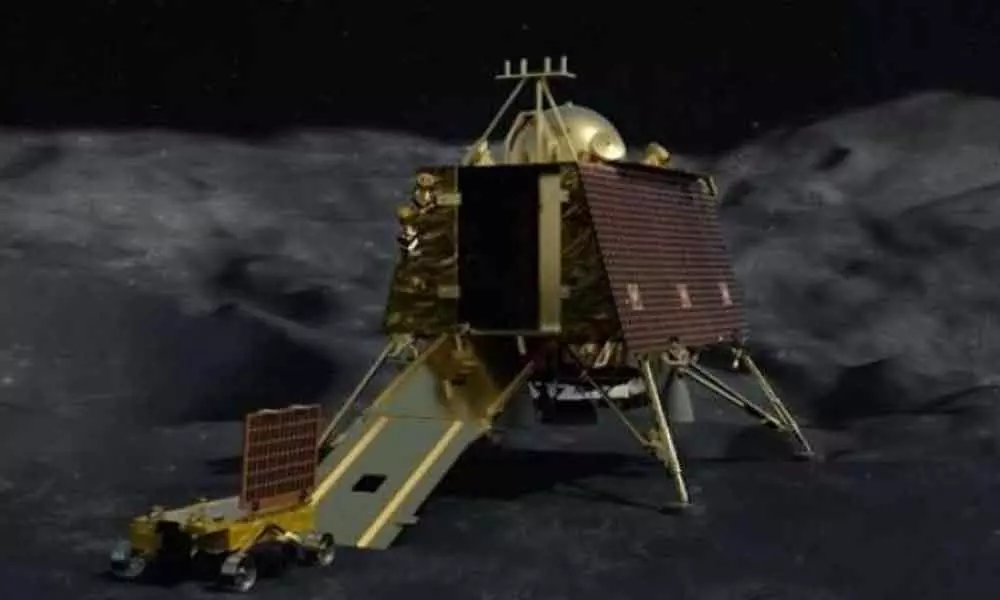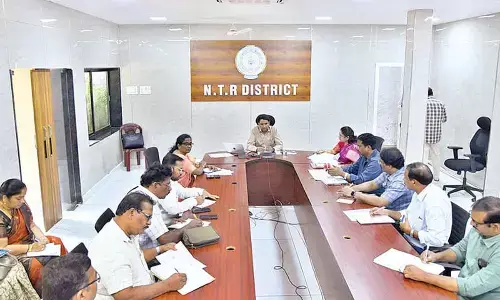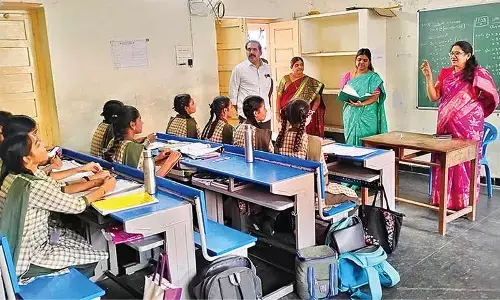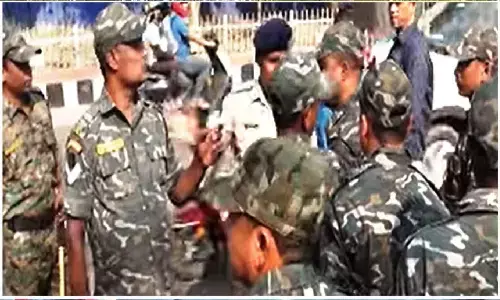Chandrayaan-2: Orbiter saves the day as ISRO tries re-establishing connection with moon-lander Vikram
Share :

Not losing hope, the Indian Space Research Organisation continued to make all-out efforts to establish link with Chandrayaan 2's 'Vikram' lander, now lying on the lunar surface after a hard-landing.
Bengaluru: Not losing hope, the Indian Space Research Organisation continued to make all-out efforts to establish link with Chandrayaan 2's 'Vikram' lander, now lying on the lunar surface after a hard-landing.
Vikram, with rover 'Pragyan' housed inside it, hit the lunar surface after communication with the ground-stations was lost during its final descent, just 2.1 km above the lunar surface, in the early hours of Saturday.
"It had a hard-landing very close to the planned (touch-down) site as per the images sent by the on-board camera of the orbiter. The lander is there as a single piece, not broken into pieces. It's in a tilted position," an ISRO official associated with the mission claimed on Monday.
"We are making all-out efforts to see whether communication can be re-established with the lander," the official said.
Flawless and precise launch and efficient management of the Chandrayaan-2 mission ----till the lander 'Vikram' lost communication with ground-stations -- has paid rich dividends to the ISRO on the orbiter front. The 2,379 kg orbiter whose mission life was designed to be one year would now be able function for almost seven years. "Enough fuel is available with the orbiter. Up to (lunar) orbit insertion, we did not have any flaw. Additional fuel which was anticipated was not used at all. Every thing went as per the plan. Additional fuel is available with us (on-board the orbiter)," an ISRO official said.
Another ISRO official added: "One of the limiting factor is on-board fuel availability. Because the performance of GSLV-MK III (which launched the spacecraft) and efficient mission management, we have enough fuel for continuing it forward for seven years."
The space agency also said, the precise launch and mission management has ensured a long life of almost seven years instead of the planned one year for the orbiter.
ISRO said 90 to 95 per cent of the Chandrayaan-2 mission objectives have been accomplished and will continue to contribute to Lunar science, notwithstanding the loss of communication with the lander which hit lunar surface after failing in its planned attempt to soft-land in the early hours of Saturday. Pointing out that the orbiter has already been placed in its intended orbit around the Moon, ISRO said, it shall enrich our understanding of the moon's evolution and mapping of the minerals and water molecules in the polar regions, using its eight state-of-the-art scientific instruments.
"The orbiter camera is the highest resolution camera (0.3 metres) in any lunar mission so far and shall provide high resolution images which will be immensely useful to the global scientific community," it said.
An ISRO official said: "Unless and until everything is intact (lander), it's very difficult (to re-establish contact). Chances are less. Only if it had soft-landing, and if all systems functioned, then only communication can be restored. Things are bleak as of now."
"I will rate it (restoring link) as good," another senior official of the space agency said, raising hope that lander springing to life again is not ruled out. "But there are limitations. We have experience of recovering spacecraft (which had lost contact) in geostationary orbit. But here (in the case of Vikram), that kind of operational flexibility is not there. Already it's lying on the surface of the Moon, and we cannot reorient it.Vital thing is antennas will have to pointed towards the ground station or the orbiter. Such operation is extremely difficult. At the same time, chances are good and we will have to keep our fingers crossed," the official said.
Chandrayaan 2 comprises an orbiter, lander (Vikram) and rover (Pragyan). The mission life of the lander and rover is one lunar day, which is equal to 14 earth days.
ISRO Chairman K Sivan had said on Saturday that the space agency would try to restore link with the lander for 14 days, and reiterated the resolve on Sunday after the orbiter's camera spotted it on the Lunar surface.



















